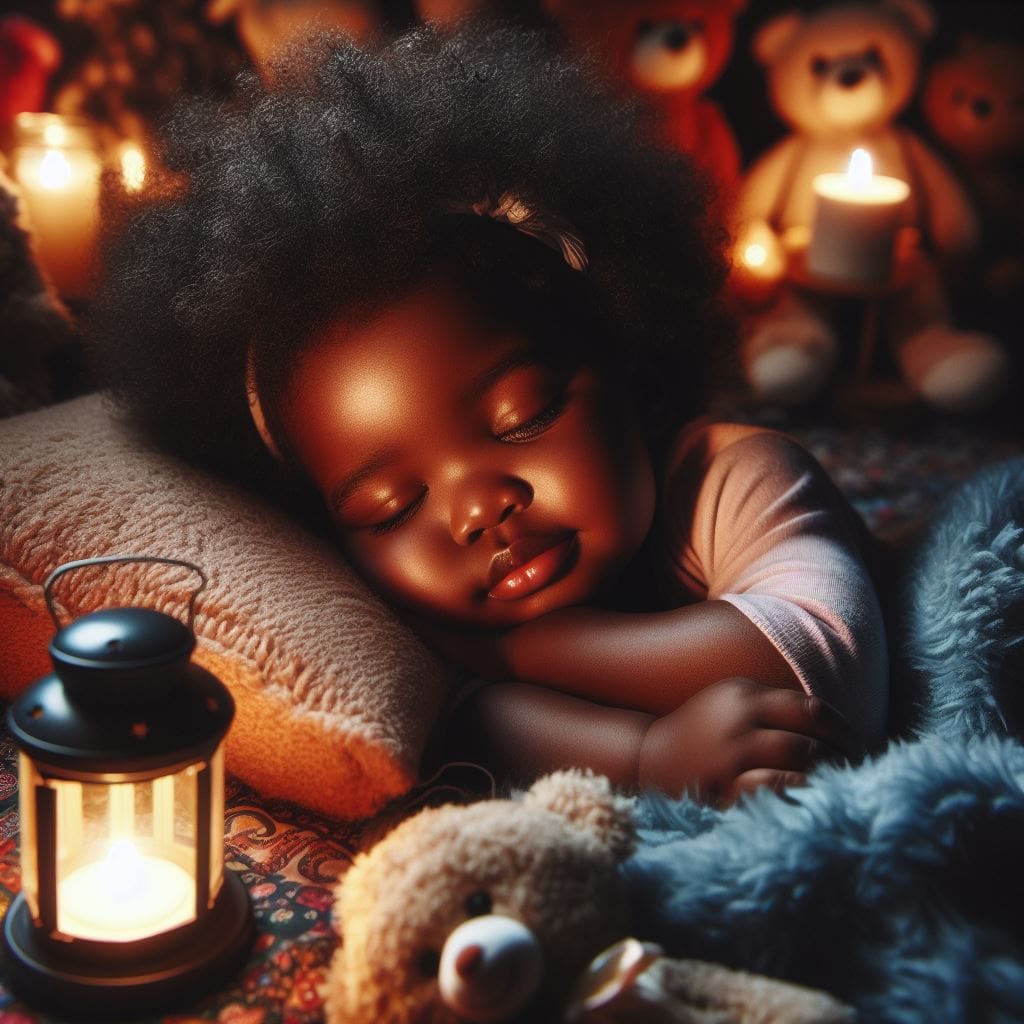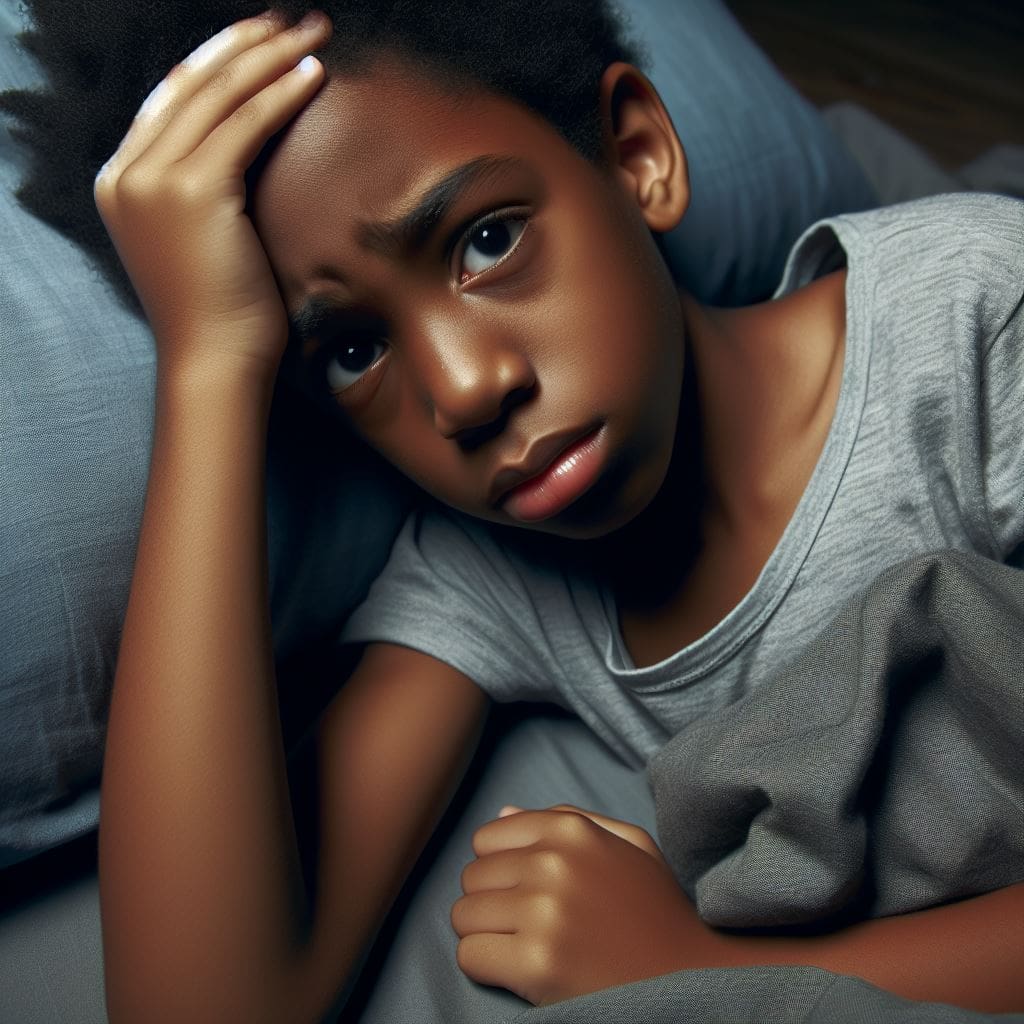Table of Contents
- Introduction
- Understanding Sleep and Sleep Cycles in Children and Teenagers
- Why Sleep Matters for Children and Teenagers
- Sleep disorders in Children and Teenagers: An Overview
- Common Sleep Disorders in Children and Teenagers
- Causes of Sleep Disorders in Children and Teenagers
- Symptoms of Sleep Disorders in Children and Teenagers
- Diagnosing Sleep Problems in Children and Teenagers
- Treating Sleep disorders in Children and Teenagers
- Tips for Promoting Healthy Sleep Habits in Children and Teenagers
- Conclusion
Introduction

Sleep is essential for growth, development, and general well-being, especially for children and teenagers.
It is important for children and teenagers to get enough sleep especially because their bodies repair tissues, consolidate memories, and regulate hormones essential to their mental and physical well-being.
Sleep disorders are common among children and teenagers around the world, and this can have a significant impact on their ability to function and their health.

Sleep disorders in children and teenagers can lead to a range of consequences. These can include difficulty concentrating, poor academic performance, increased risk of accidents, mood swings, and even mental health issues such as anxiety disorders and depression.
It is crucial to address and treat sleep disorders in this age group to ensure their overall well-being and development.
Common types of sleep disorders in children and teenagers include insomnia, sleep apnea, restless leg syndrome, and narcolepsy.
Insomnia refers to difficulty falling asleep or staying asleep, while sleep apnea is characterized by pauses in breathing during sleep.
Restless leg syndrome causes uncomfortable sensations in the legs, leading to an irresistible urge to move them.
Narcolepsy, on the other hand, is a neurological disorder that causes excessive daytime sleepiness and sudden, uncontrollable sleep attacks.
These sleep disorders can significantly disrupt the sleep patterns of children and teenagers, affecting their overall well-being and daily functioning.
This comprehensive guide explores sleep disorders in children and teenagers. We’ll delve into the different types, causes, and symptoms specific to each age group. We’ll also explore effective strategies to improve sleep hygiene and promote restful nights for your little ones.
Understanding Sleep and Sleep Cycles in Children and Teenagers
Before diving into sleep disorders, it’s important to understand how sleep patterns differ between children and adults. Sleep needs varies by age, with younger children requiring significantly more sleep than adults.
According to American Academy of Sleep Medicine and National sleep Foundation, here’s a breakdown of typical sleep needs by age group:
- Newborns (0-3 months): 14-17 hours per day
- Infants (4-12 months): 12-15 hours per day
- Toddlers (1-3 years): 11-14 hours per day
- Preschoolers (3-5 years): 10-13 hours per day
- School-aged children (6-13 years): 9-12 hours per day
- Teenagers (14-18 years): 8-10 hours per day
Sleep Cycles: Similar to adults, children and teenagers experience cyclical sleep patterns consisting of two main stages: non-rapid eye movement (NREM) sleep and rapid eye movement (REM) sleep.
- NREM Sleep: NREM sleep makes up around 75% of total sleep and consists of four progressively deeper stages. During deep NREM sleep, brain activity slows down considerably, and muscles relax. This is the restorative stage, crucial for physical growth and repair.
- REM Sleep: REM sleep makes up about 25% of total sleep and is characterized by rapid eye movements, increased brain activity, and muscle paralysis (except for the eyes). This is the stage of sleep associated with dreaming.
Throughout the night, children and teenagers cycle through these stages, with the proportion of REM sleep increasing as they age. Newborns spend a significant portion of their sleep time in REM sleep, while teenagers have a higher percentage of deep NREM sleep compared to younger children [2].
It’s important to note that these are just general guidelines. Individual sleep needs can vary based on factors like genetics, activity level, and overall health
Why Sleep Matters for Children and Teenagers
Sleep is not a luxury but a biological necessity for children and teenagers. During sleep, their bodies are not simply resting; they are actively working to:
- Support physical growth and development: Sleep hormones, such as growth hormone, are released during sleep, promoting tissue repair and growth.
- Boost the immune system: Sleep strengthens the immune system, making children and teenagers less susceptible to illnesses.
- Enhance cognitive function: Sleep is essential for memory consolidation, learning, and concentration. Sleep deprivation can lead to difficulty focusing, remembering information, and processing emotions.
- Improve mood and emotional well-being: Adequate sleep helps regulate emotions and promotes emotional resilience. Sleep problems can contribute to irritability, anxiety, and depression in children and teenagers.
Sleep disorders in Children and Teenagers: An Overview
Sleep problems are any conditions that disrupt the quality, duration, or timing of sleep. They can be occasional or chronic and can range from mild to severe. According to the American Academy of Sleep Medicine, approximately 25-50% of children experience sleep problems at some point in their development.
These sleep disturbances can significantly impact a child or teenager’s well-being, leading to:
- Daytime sleepiness and fatigue: This can manifest as difficulty concentrating in school, decreased energy levels, and increased risk of accidents.
- Behavioral problems: Sleep-deprived children and teenagers may exhibit increased hyperactivity, irritability, and difficulty managing emotions.
- Learning difficulties: Sleep problems can impair cognitive function, making it harder for children and teenagers to learn and retain information.
- Increased risk of chronic health problems: Chronic sleep deprivation has been linked to an increased risk of obesity, diabetes, and heart disease in later life.
Common Sleep Disorders in Children and Teenagers
Sleep disorders are quite common in children, affecting up to 30% of children at various stages of development. Here’s a closer look at some common sleep issues faced by children:
- Insomnia: This is the most common sleep disorder in teenagers, characterized by difficulty falling asleep, staying asleep, or both. Teenagers with insomnia may wake up feeling tired and unrefreshed, even after a full night’s sleep.
- Sleep Apnea: Sleep apnea is a serious sleep disorder characterized by brief pauses in breathing during sleep. These pauses can disrupt sleep quality and lead to daytime sleepiness. Children with enlarged tonsils or adenoids are at increased risk for sleep apnea.
- Restless Legs Syndrome (RLS): RLS is a neurological disorder characterized by an irresistible urge to move the legs, usually at night. This can make it difficult for children and teenagers to fall asleep or stay asleep.
- Parasomnias: Parasomnias are a group of sleep disorders characterized by abnormal behaviors or experiences during sleep. Examples in children and teenagers include:
- Night terrors: These are sudden episodes of intense fear and arousal from sleep, often accompanied by screaming, sweating, and rapid breathing. Night terrors are more common in young children.
- Sleepwalking: Sleepwalking involves walking or performing other activities while partially asleep. Children who are sleepwalking may appear confused and have no memory of the episode in the morning.
- Sleep talking: This is a harmless sleep disorder where children or teenagers talk in their sleep.
- Delayed Sleep Phase Syndrome (DSPS): This sleep disorder is particularly common in teenagers and is characterized by difficulty falling asleep at night and a preference for later sleep schedules. Teenagers with DSPS may struggle to wake up early for school and experience daytime sleepiness.
- Circadian Rhythm Sleep Disorders: These disorders disrupt the body’s natural sleep-wake cycle. Jet lag and shift work sleep disorder are examples of circadian rhythm sleep disorders that can affect teenagers.
Causes of Sleep Disorders in Children and Teenagers
Sleep problems in children and teenagers can be caused by various factors, including:
- Developmental factors: As children mature, their sleep patterns naturally change. Newborns and infants may sleep frequently throughout the day and night, while teenagers often experience a shift towards later sleep-wake schedules. These developmental changes can sometimes lead to temporary sleep disturbances.
- Medical conditions: Certain medical conditions, such as allergies, asthma, chronic pain, and neurological disorders, can disrupt sleep.
- Mental health conditions: Anxiety, depression, and attention deficit hyperactivity disorder (ADHD) can all contribute to sleep problems in children and teenagers.
- Medications: Some medications can have side effects that disrupt sleep.
- Lifestyle factors: Poor sleep hygiene habits, such as irregular sleep schedules, excessive screen time before bed, and caffeine intake close to bedtime, can significantly impact sleep quality.
- Environmental factors: Noise, light pollution, and an uncomfortable sleep environment can make it difficult to fall asleep or stay asleep.
- Family history: There may be a genetic predisposition to certain sleep disorders.
Symptoms of Sleep Disorders in Children and Teenagers
The symptoms of sleep problems in children and teenagers can vary depending on the specific disorder. However, some common symptoms include:
- Difficulty falling asleep or staying asleep
- Waking up frequently during the night
- Waking up too early in the morning
- Daytime sleepiness and fatigue
- Difficulty concentrating and focusing
- Irritability and mood swings
- Behavioral problems
- Hyperactivity
- Decreased appetite or overeating
- Bedwetting (in younger children)
- Dark circles under the eyes
- Headaches or stomachaches
Diagnosing Sleep Problems in Children and Teenagers
If you suspect your child or teenager has a sleep problem, it is important to consult a doctor or sleep specialist. The doctor will ask you about your child’s sleep history, symptoms, and lifestyle habits. They may also perform a physical exam and order some tests, such as a sleep study.
A sleep study is a test conducted at a sleep lab where brain activity, muscle activity, breathing, and eye movements are monitored during sleep. A sleep study can help diagnose sleep disorders such as sleep apnea, restless legs syndrome, and parasomnias.
Treating Sleep disorders in Children and Teenagers
Treatment for sleep problems in children and teenagers depends on the underlying cause. Here are some common treatment options:
- Improving sleep hygiene: This is often the first line of treatment for sleep problems. Strategies include establishing regular sleep schedules, creating a relaxing bedtime routine, and optimizing the sleep environment (dark, quiet, cool, and comfortable). It’s also important to limit screen time before bed and avoid caffeine and sugary drinks in the evening.
- Behavioral therapy: Cognitive-behavioral therapy for insomnia (CBT-I) can be a helpful treatment option for teenagers with insomnia. CBT-I teaches teenagers techniques to manage stress, improve sleep habits, and overcome negative thoughts and beliefs that may be contributing to their sleep problems.
- Relaxation techniques: Relaxation techniques such as deep breathing exercises, progressive muscle relaxation, and mindfulness meditation can help children and teenagers wind down before bed and promote better sleep quality.
- Medication: In some cases, medication may be prescribed to help with sleep problems. This may include sleep aids such as melatonin or medications to treat underlying conditions that are disrupting sleep (e.g., anxiety medication). It’s important to discuss the risks and benefits of medication with your doctor.
- Medical devices: For children with sleep apnea, a CPAP (continuous positive airway pressure) machine may be used to keep the airway open during sleep.
- Surgery: In rare cases, surgery may be an option for treating sleep problems, such as some types of sleep apnea.
Tips for Promoting Healthy Sleep Habits in Children and Teenagers
Here are some additional tips to help your child or teenager develop healthy sleep hygiene and get a good night’s rest:
- Establish a regular sleep schedule: Set consistent bedtime and wake-up times, even on weekends. This helps regulate your child or teenager’s body’s natural sleep-wake cycle.
- Create a relaxing bedtime routine: Develop a calming bedtime routine that helps your child or teenager wind down before bed. This may include taking a warm bath, reading a book, or listening to calming music. Avoid stimulating activities such as watching television or using electronic devices for at least an hour before bedtime.
- Optimize the sleep environment: Make sure your child or teenager’s bedroom is dark, quiet, cool, and clutter-free. Invest in blackout curtains, earplugs, a comfortable mattress and pillows, and keep the temperature between 60 and 67 degrees Fahrenheit.
- Encourage regular exercise: Aim for at least 30 minutes of moderate-intensity exercise most days of the week. However, avoid strenuous exercise close to bedtime, as it can be stimulating.
- Limit screen time before bed: The blue light emitted from electronic devices can interfere with sleep. Encourage your child or teenager to turn off electronic devices at least an hour before bedtime.
- Manage stress: Help your child or teenager develop healthy coping mechanisms to manage stress. Techniques such as deep breathing exercises, meditation, and spending time outdoors can be beneficial.
- Establish a relaxing wake-up routine: Create a gentle wake-up routine that allows your child or teenager to ease into the day. Avoid hitting the snooze button, as this can disrupt their sleep cycle.
- Make sleep a priority: Talk to your child or teenager about the importance of sleep for their overall health and well-being. Encourage them to prioritize getting enough sleep each night.
- Be a good role model: Children and teenagers often learn by example. Practice good sleep hygiene yourself and create a sleep-supportive environment in your household.
Conclusion
It’s of utmost importance to make sure children and teenagers get enough sleep for their physical, mental, and emotional well-being.
As a parent or caregiver, it’s essential to understand the root causes of sleep-related issues and the available treatment options to assist your child in developing healthy sleeping habits.
Remember, a good night’s sleep can help your child excel and unlock their full potential, therefore, prioritizing sleep is an investment in your child or teenager’s health and happiness for years to come.
Disclaimer: This article is intended for informational purposes only and is not a substitute for professional medical advice. Always consult with a healthcare professional before starting any new treatment or making changes to your child or teenager’s lifestyle.



